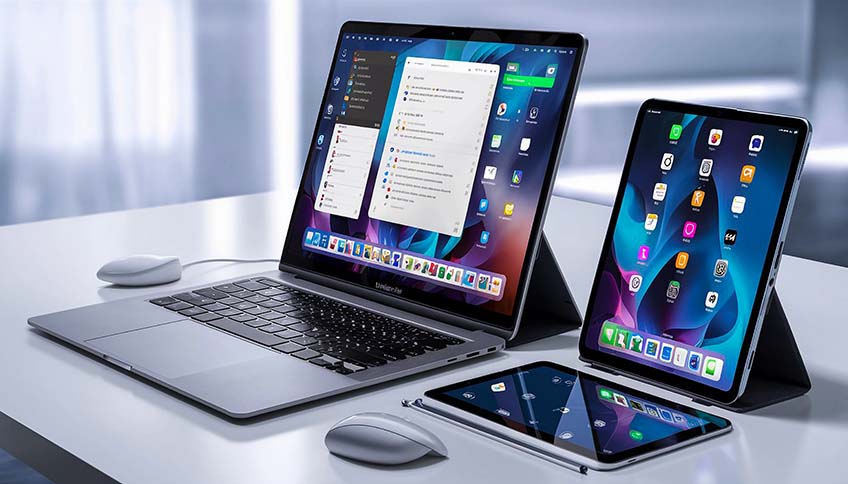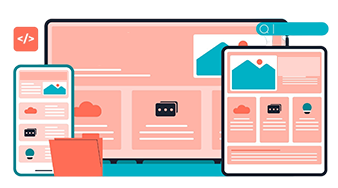Here is quick preview of comparison among mobile app Vs web app Vs desktop app in order to help you choose the best one.
Mobile App Vs Web App Vs Desktop App: Explaining the Difference
Mobile App Vs Web App Vs Desktop App: It’s almost impossible to go a day without encountering technology. Whatever we are doing today involves technology. As the innovation is happening digitally, the list of application platforms as well as companies offering mobile app development services is expanding.
This has given a whole new space for apps to constantly emerge. These advancements are all designed to enhance accessibility and reliability.
When deciding on a platform for a new application. Businesses must in advance select their platforms. It can be any one of the following:
- Mobile app
- Web app, or
- Desktop app
Each of the platforms mentioned above have their own set of distinctive features. Therefore, to decide on any one of these platforms, it is important to understand these differences for making an informed decision.
This article will explore the unique aspects of mobile, web, and desktop applications. We will be examining their characteristics, uses, and benefits to decide how they can fit into organizational needs. The article will also provide the insights on how each platform differs from other.
Mobile Applications
Mobile applications in general are software programs that are installed on smartphones and tablets. They are developed to deliver specific services. Due to some exceptional features in them, mobile apps have taken the market by storm today.
Significant technological advancements have attributed to the rising app popularity. These advancements have resulted in faster, more reliable internet access and the continuous enhancement of smartphone capabilities. These improvements have led to a surge in the number of users actively engaging with various mobile applications.
Mobile apps are easy to download and installed from platforms like the App Store and Google Play. They effortlessly offer a seamless, user-friendly experience on smaller screens, tailored for touch-based interactions.
The uses for mobile applications are vast and varied. Categories include e-commerce and financial apps, games, social media apps like Facebook, Instagram and various lifestyle apps focused on diet, sports, fashion, science, and dating.
Technologies Used for Developing Mobile Applications
The technology used for mobile applications is largely determined by the device’s operating system. The two dominant systems are iOS and Android. For iOS devices, apps are developed using Swift, which has replaced the older Objective-C. For Android devices, Kotlin is the preferred programming language, although older Android apps were typically built with Java. In practice, it is uncommon to develop a digital product exclusively for one platform; each system requires its own unique codebase.
A popular alternative for mobile applications is Flutter. It is a cross-platform technology. The key advantage of Flutter is that users cannot tell whether an app is written natively or using Flutter. For investors, the significant benefit is the creation of a single source code instead of two separate ones, resulting in time and cost savings while maintaining high quality.
These technologies pertain to the front-end layer of the application, which includes the elements that users directly interact with. It’s important to remember that most mobile apps also need a back-end layer to handle data processing and storage, such as user login details, purchase history, saved routes, or playlists, which are not stored on the device itself.
For the back-end of a mobile application, we frequently recommend using Firebase. This approach provides many pre-built back-end elements and leverages Google’s stable technology. This strategy further reduces development time and costs without compromising quality. Firebase is particularly well-suited for mobile solutions, offering a robust and efficient back-end infrastructure.
A Brief on Web Applications
Web apps are applications that run directly from any internet browser. They do not require downloading or installation. To access them, all you need is a device with a browser like Chrome or Safari. This makes them inherently cross-platform. Their versatility and ease of access have contributed to their widespread popularity.
Many companies provide both web and mobile applications to their users. Examples include Facebook, Zara, and eBay. Interestingly, these companies initially offered only web versions of their services. If you are just starting out, this might be a similar approach to consider.
There is also a significant category of applications that function more efficiently on a computer, making the choice of a web application straightforward. This typically includes accounting applications, CRM systems, and ERP systems. These types of applications benefit from the larger screens and more powerful processing capabilities of desktop environments.
Technologies for Developing Web Applications
Web applications are composed of two main components: the front-end (client-side) and the back-end (server-side). The front-end handles the presentation layer, delivering content and interacting directly with the user. It typically relies on technologies such as HTML, CSS, and JavaScript, often enhanced with libraries and frameworks like React, Angular and others.
The back-end, on the other hand, manages the application’s core functions, including logic, data storage, and operations. It remains in constant communication with the front-end to ensure seamless functionality. Popular back-end technologies include .NET, PHP, JavaScript (often with Node.js), Java, and Python. Together, these front-end and back-end technologies work in harmony to create robust and dynamic web applications.
Are websites the same as web apps?
Web apps run in browsers, making it challenging to differentiate them from websites at first glance. However, upon closer inspection, the differences are quite significant.
Websites are primarily informational, featuring static content and accompanying graphics. User interactions are usually simple, such as clicking links or scrolling through pages. Websites are designed for quick loading times and are built using HTML, CSS, and JavaScript, with scripts often limited to basic functions like animations or form validation.
In contrast, web apps go beyond merely presenting content; they offer users specific services and interactive features. These can include registration, booking, shopping, and communication, often integrating with external services such as payment systems. Due to their dynamic elements and more complex scripts, web apps may have longer loading times compared to static websites. The front-end technologies for web apps are predominantly based on JavaScript and related solutions, such as TypeScript and React.js.
Desktop Applications
Desktop applications are software programs installed directly on a computer’s hard drive, operating independently of a web browser. These applications are often customized for specific hardware, such as printers or control systems, and are commonly used to meet internal business needs. Desktop apps are particularly advantageous for offline work and for leveraging specific operating system functions.
Some of the most common types of desktop applications include design and graphics software, accounting and transaction systems, point of sale (POS) solutions, drivers, and device control software. These applications are essential for tasks that require robust processing power, specialized functionality, or reliable performance without an internet connection.
In Conclusion for Mobile App Vs Web App Vs Desktop App
Choosing between mobile, web, and desktop applications is a strategic decision that requires careful analysis of various factors. Mobile apps provide convenience and high interaction capabilities on smartphones, making them ideal for on-the-go access.
Web apps offer the advantage of easy browser-based access and seamless updates, ensuring users always have the latest version without needing manual installations.
Desktop apps deliver advanced functionality and can be tailored to leverage specific hardware and operating system features, making them suitable for resource-intensive tasks. Ultimately, the best choice depends on the specific project goals, user requirements, and overall business strategy. One must consider web app development services that also offer mobile support and maintenance services.














